Makerspace, Innovation Center, Fab Lab… whatever you prefer to call them, these creative, hands-on learning spaces are flourishing at schools of every level. Initially found in a corner of a library or academic building, more and more these spaces are being created as stand-alone facilities where students can build, engineer, experiment, and collaborate with other makers.
If you’re beginning the makerspace design process, there are many facets to consider including what technology to implement, how to design the space in a way that encourages collaboration, and who will utilize the space.
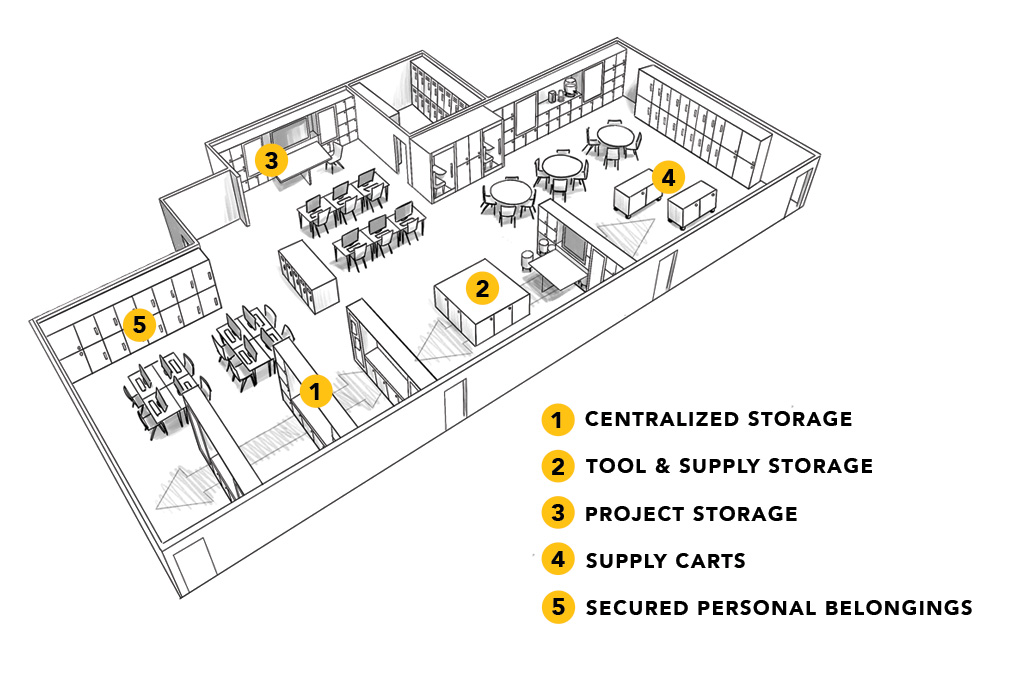
One key aspect of makerspace design many campuses fail to consider is storage. Spacesaver’s storage experts can help optimize your space to store everything students need, right where they need it. Here are a few areas to keep in mind as you design storage into your innovation center or makerspace.
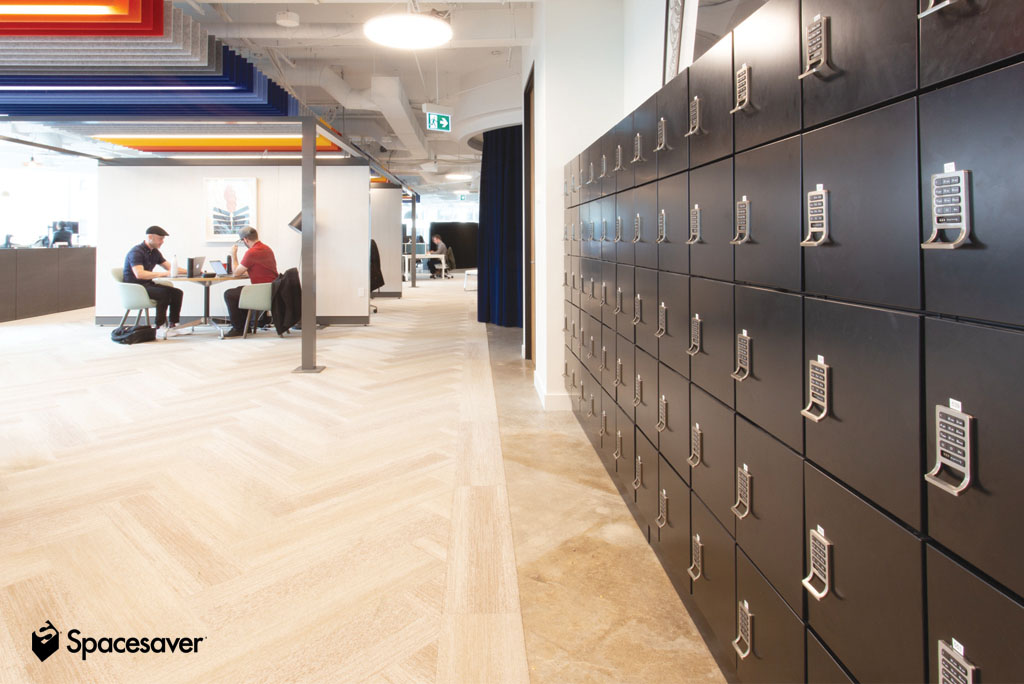
- Centralized Storage
- Tool & Supply Storage
- Project Storage
- Supply Carts
- Secured Personal Belongings
Centralized Storage
The most common way to store supplies is to offer a central storage area where students can temporarily rent the supplies they need. By utilizing this method, organizers can provide security for rented items and tools and visibility into the types of projects students are working on.
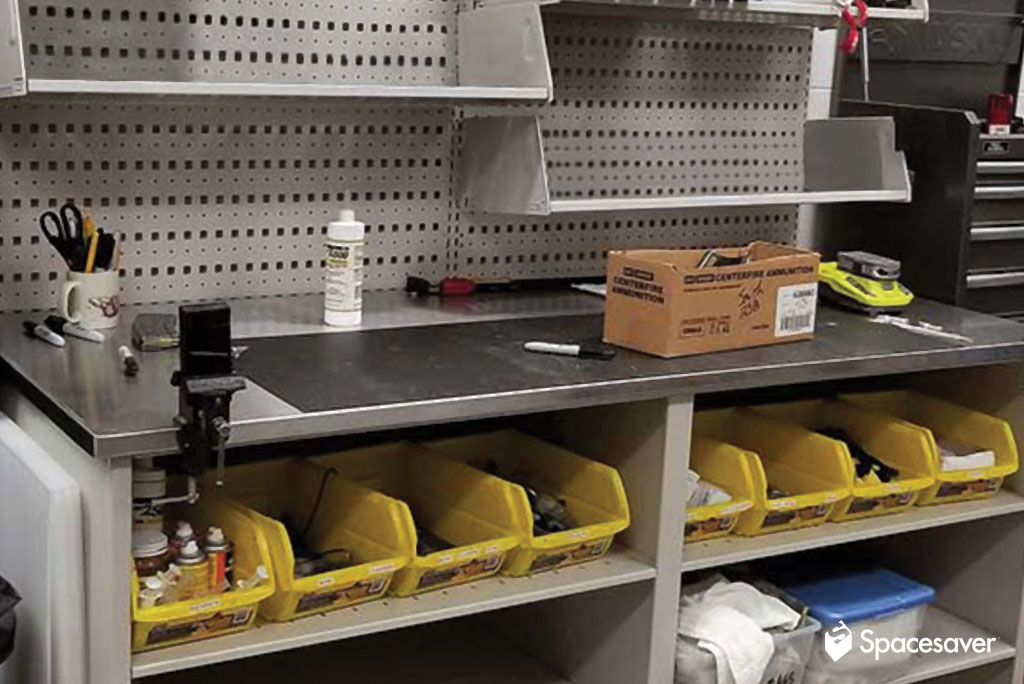
Within your centralized storage room, modular shelving with a colored bin system is a great way to keep materials organized while providing space for larger items. Using bins makes transporting supplies into the space more efficient and streamlines the checkout process as students can simply take the bin to their workstation.
If your storage room is tight on space, you could consider High-Density Mobile Shelving, an easy-to-install compact shelving system that can double storage space in the same footprint. Mounted on a rail system, mobile shelving allows you to access all your supplies by sliding aisles open. Plus, you can outfit the system with the accessories maximize storage of the tools and accessories users need.
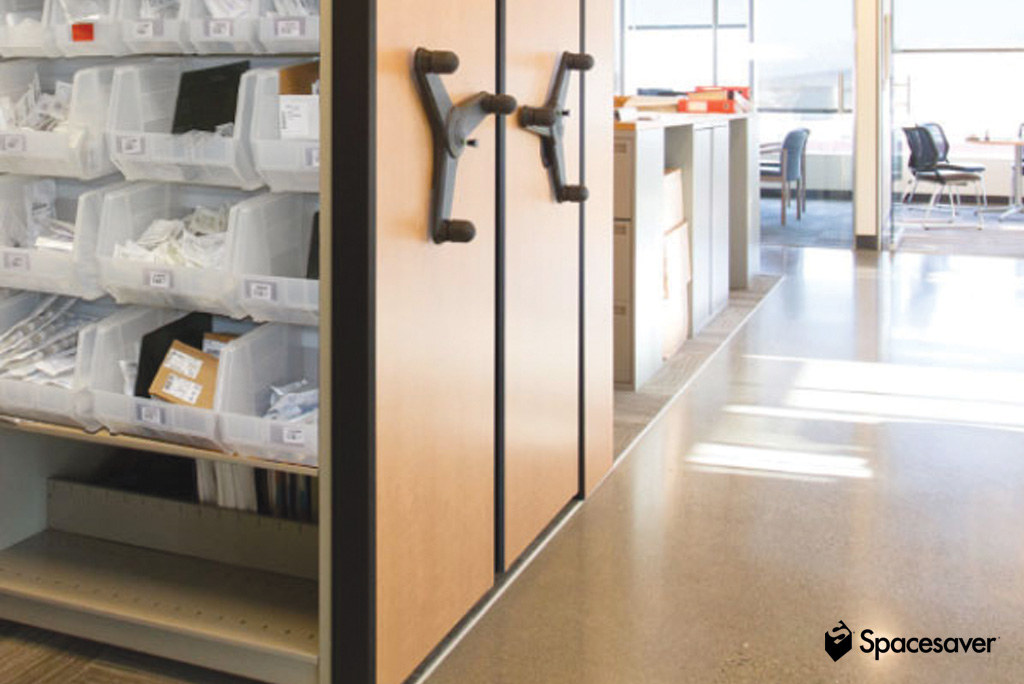
Tool & Supply Storage
If a central storage room isn’t feasible for all your tools and supplies, you can consider integrating supply storage into workstations. For example, if you know that an area typically requires the same supplies for all projects, you can equip workstations with drawers and cabinets to keep those specific supplies easily accessible, ensuring students have what they need right where they need it.
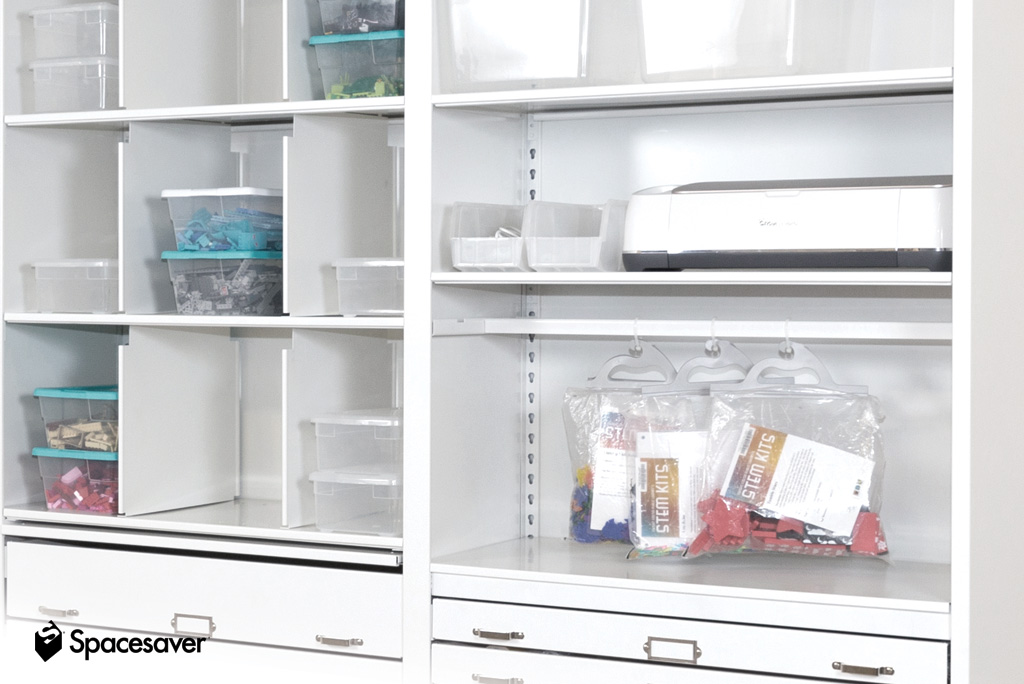
Project Storage
Most students aren’t going to finish their project in one session, and in fact might keep working on it for an entire semester. Rather than force students to lug their work back and forth from the makerspace to their home and risk damaging or losing their project, you can offer temporary storage lockers. These lockers come in a variety of sizes to accommodate varying sizes of projects, and can be used with traditional locks, digital locks, or even RFID/student ID swipe.
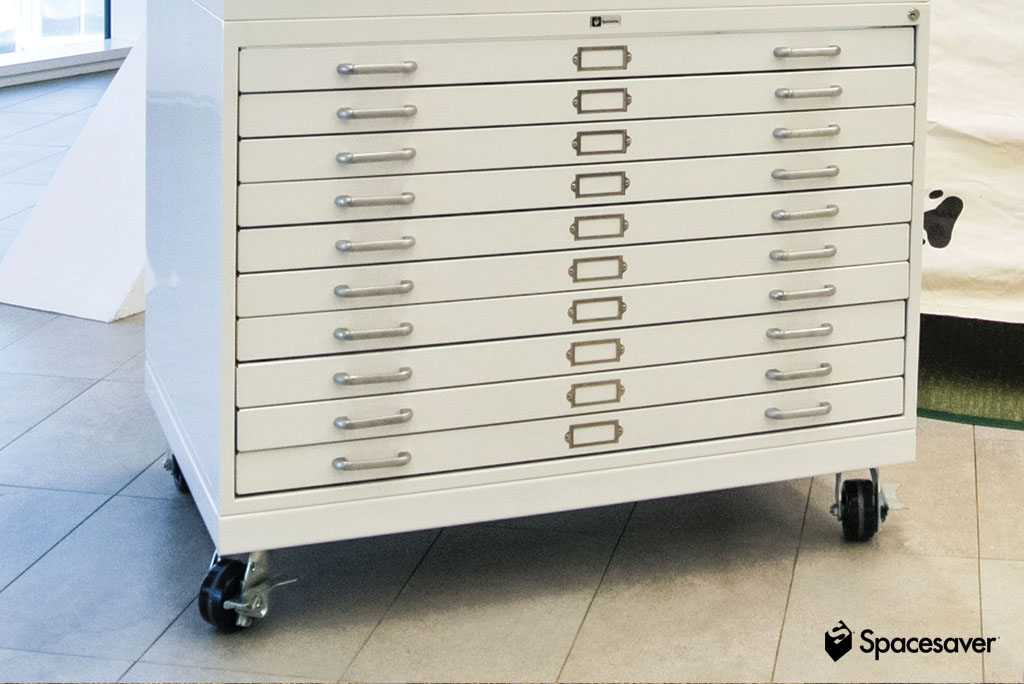
Supply Carts
Makerspaces have multiple uses dictated by the demands of the current user. By utilizing supply carts that can be easily moved, preparation for your next event is made timely, safe, and efficient. In addition, the carts can be fitted with roll-out browsing boxes, small shelves for accessories, and other interchangeable storage and display products to accommodate most uses.
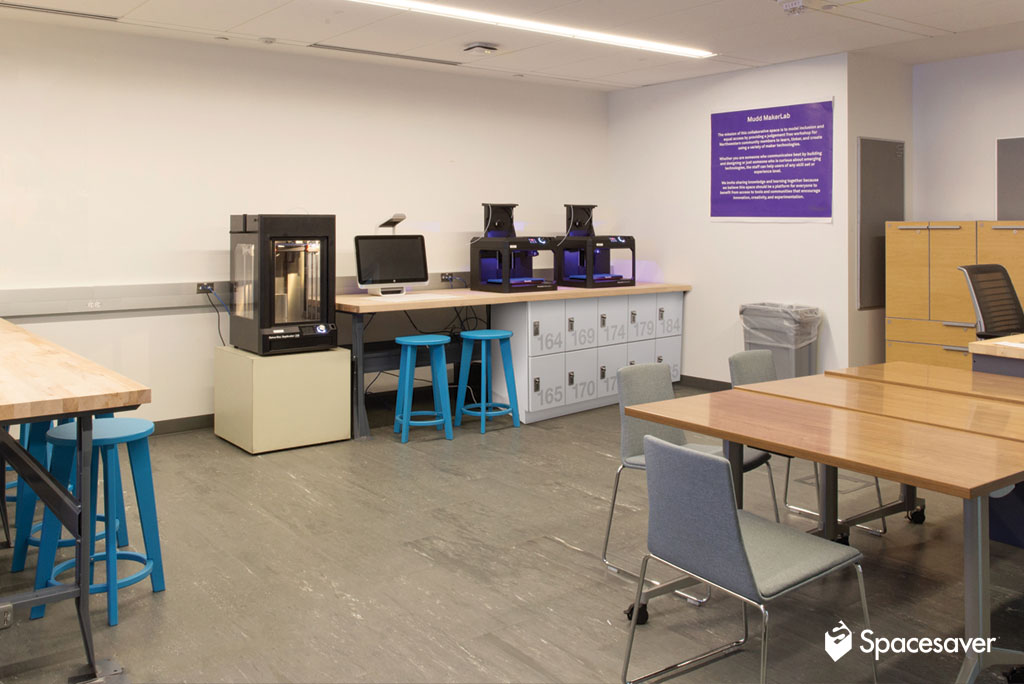
Secured Personal Belongings
For areas where potentially dangerous equipment is being used, you’ll want a spot for students to stash their backpacks so they don’t create a tripping hazard. Day-Use Lockers are a great way to offer temporary, secure storage.
Makers of Space
For nearly 50 years, Spacesaver has been a trusted partner in helping architects, administrators, and other valuable educational resources understand the complexities involved in planning and designing effective learning spaces. Reach out to set a up a consultation with one of our experts.

